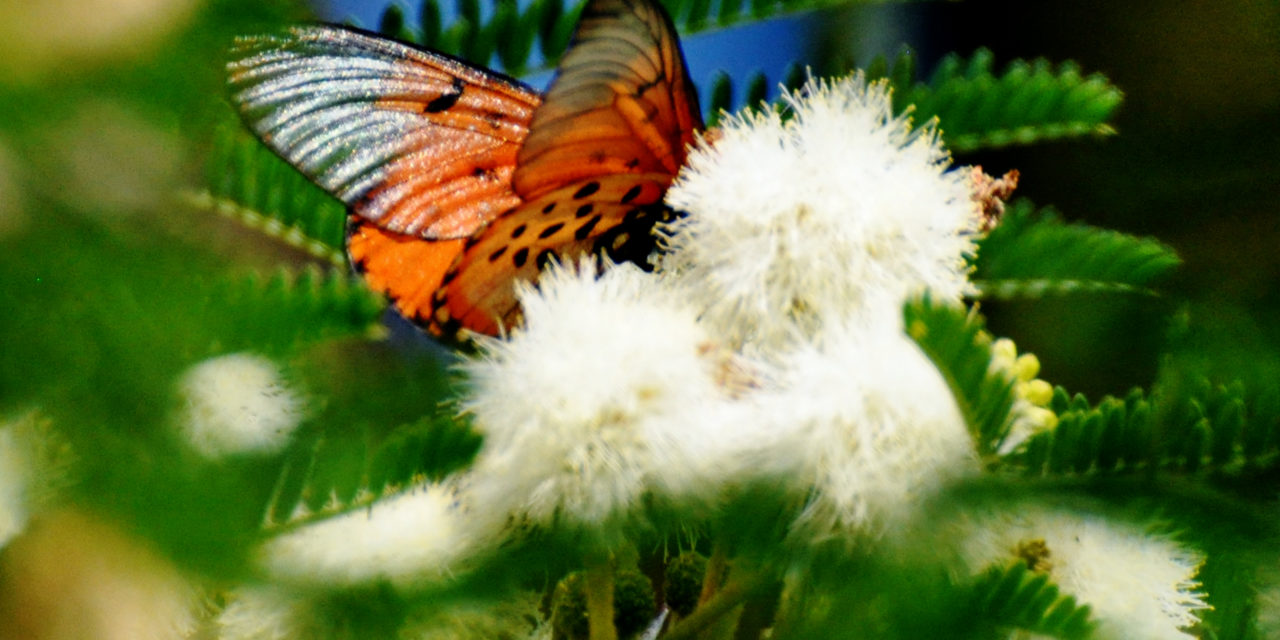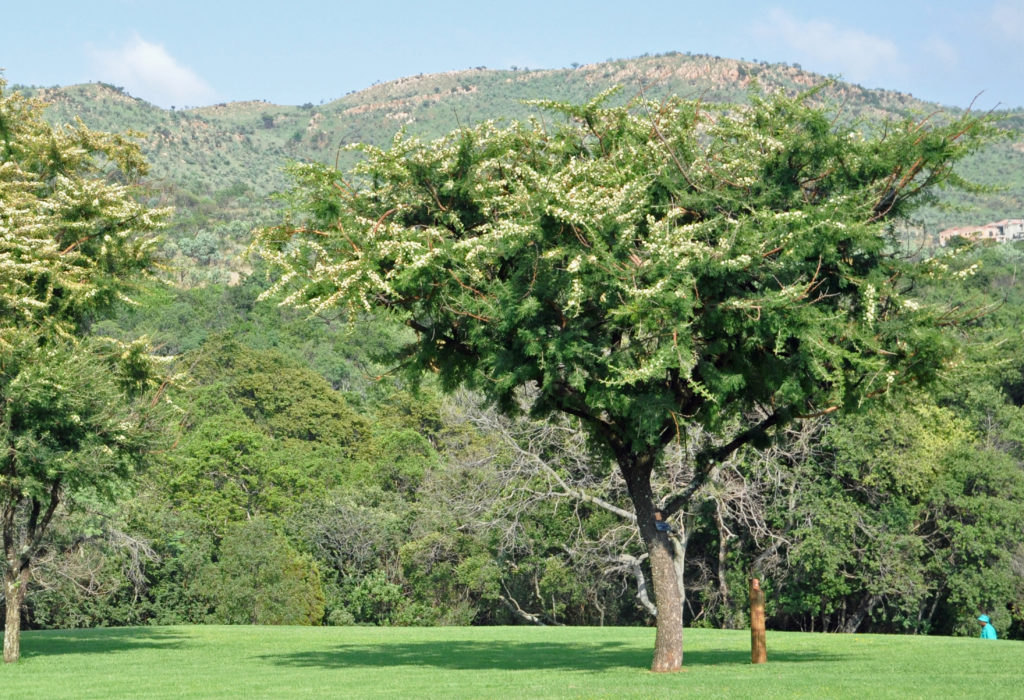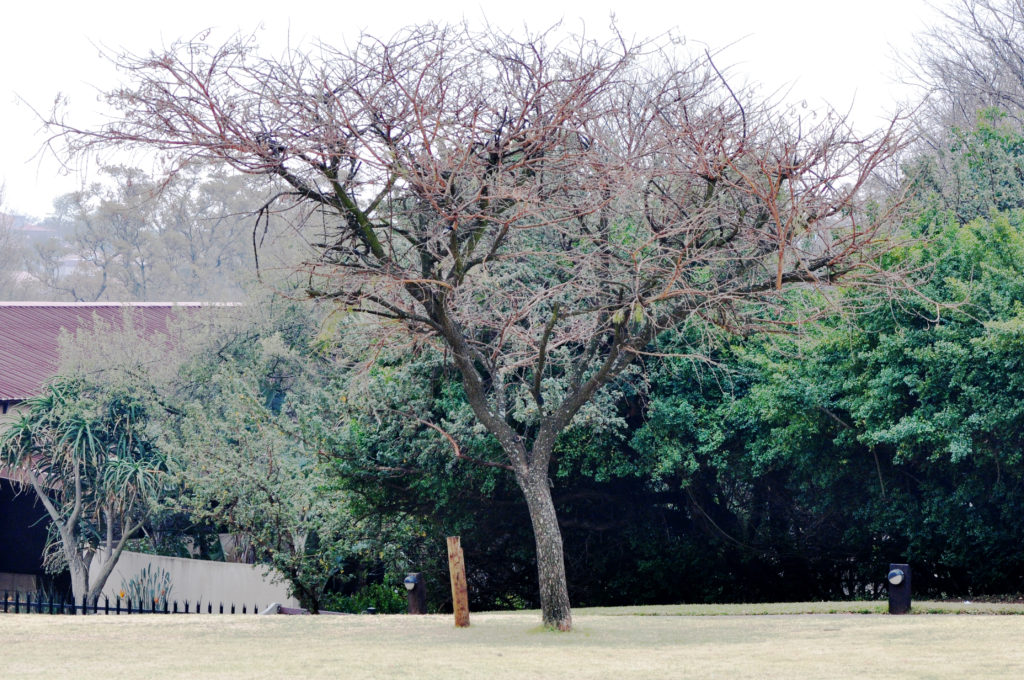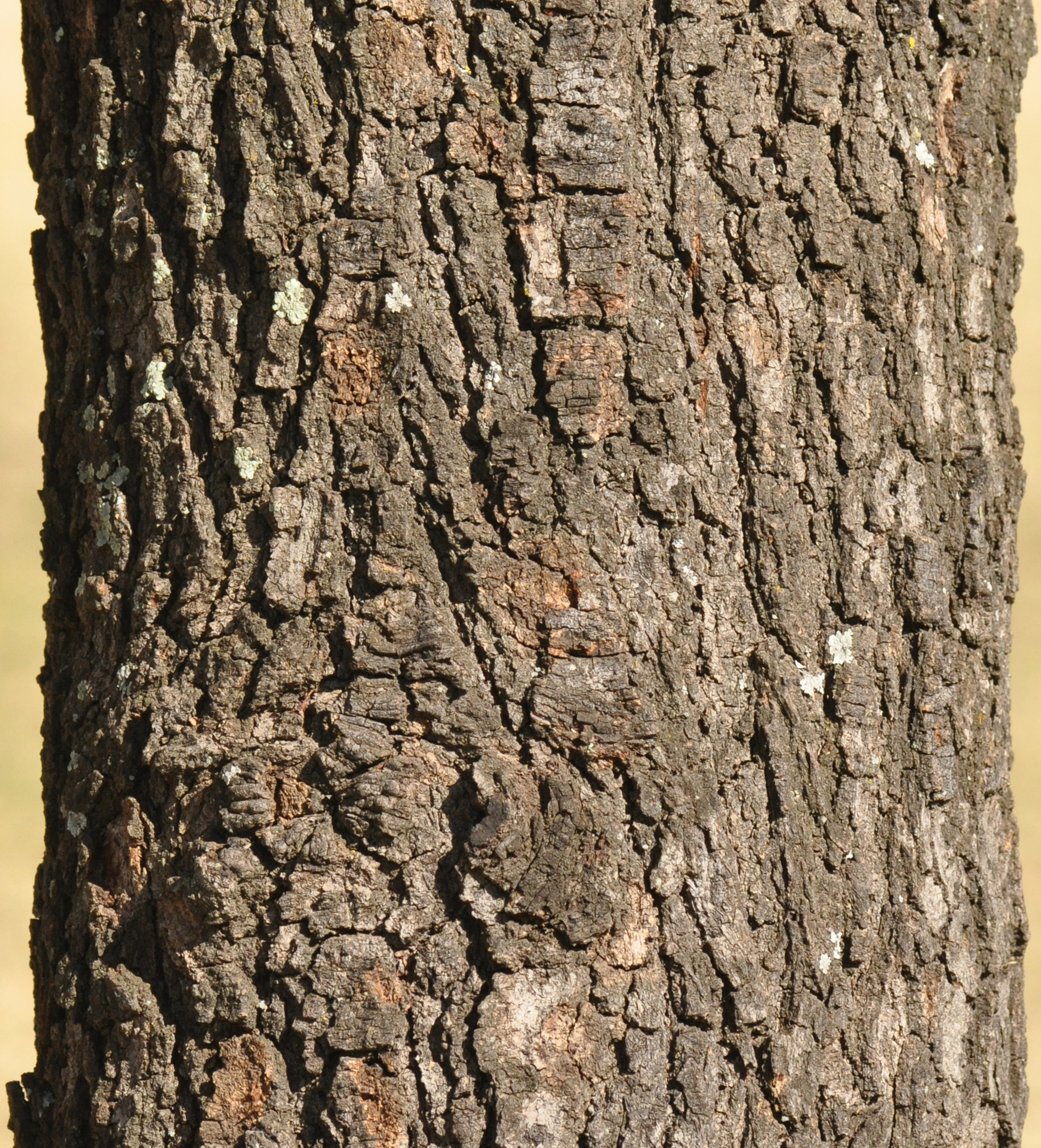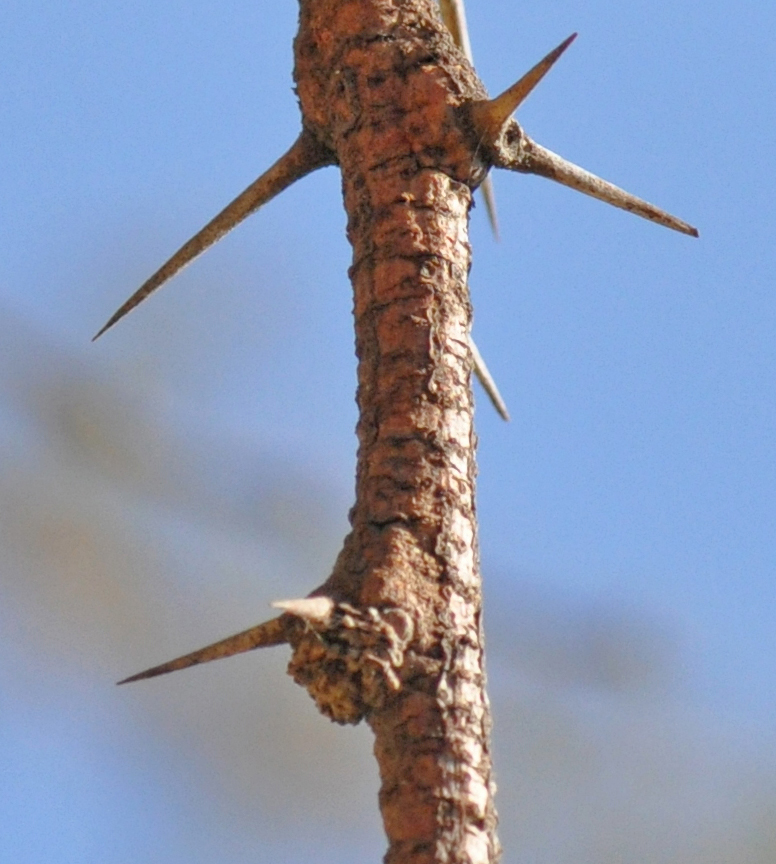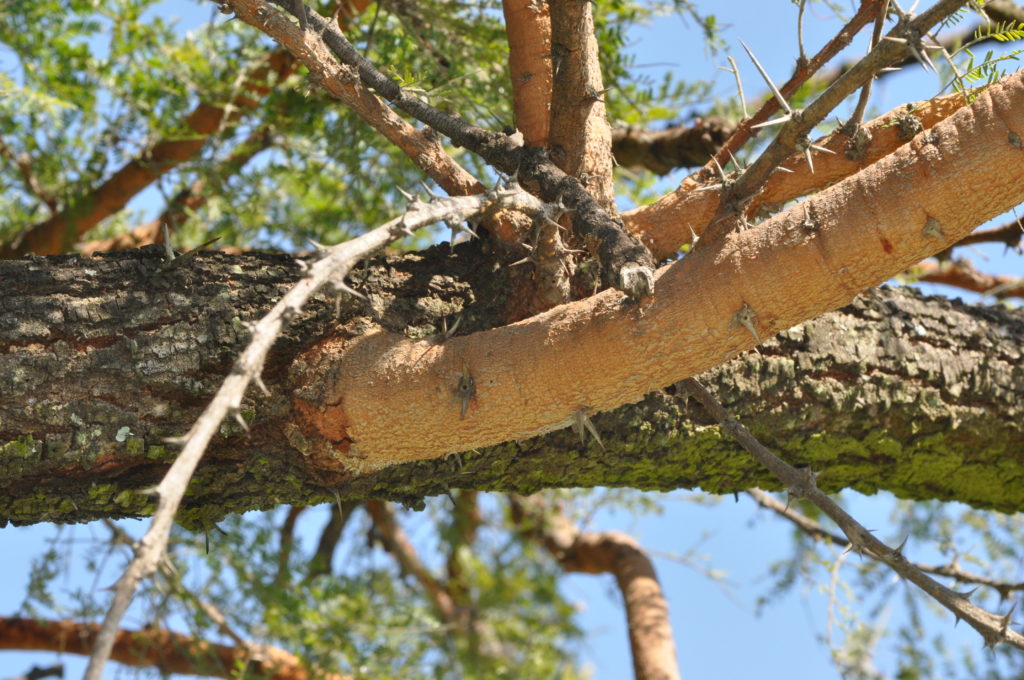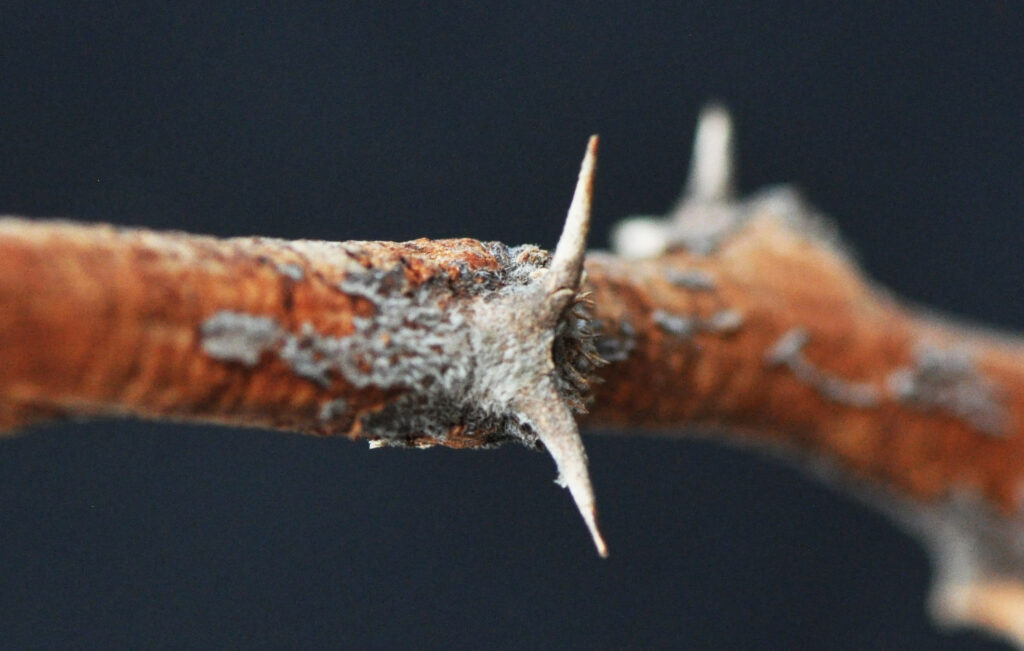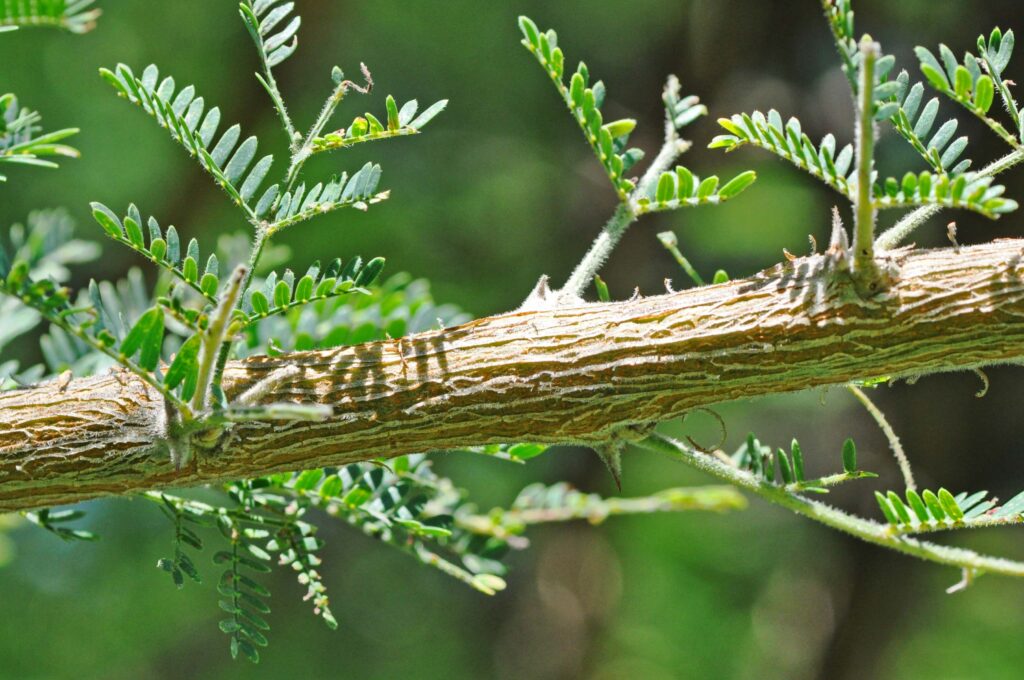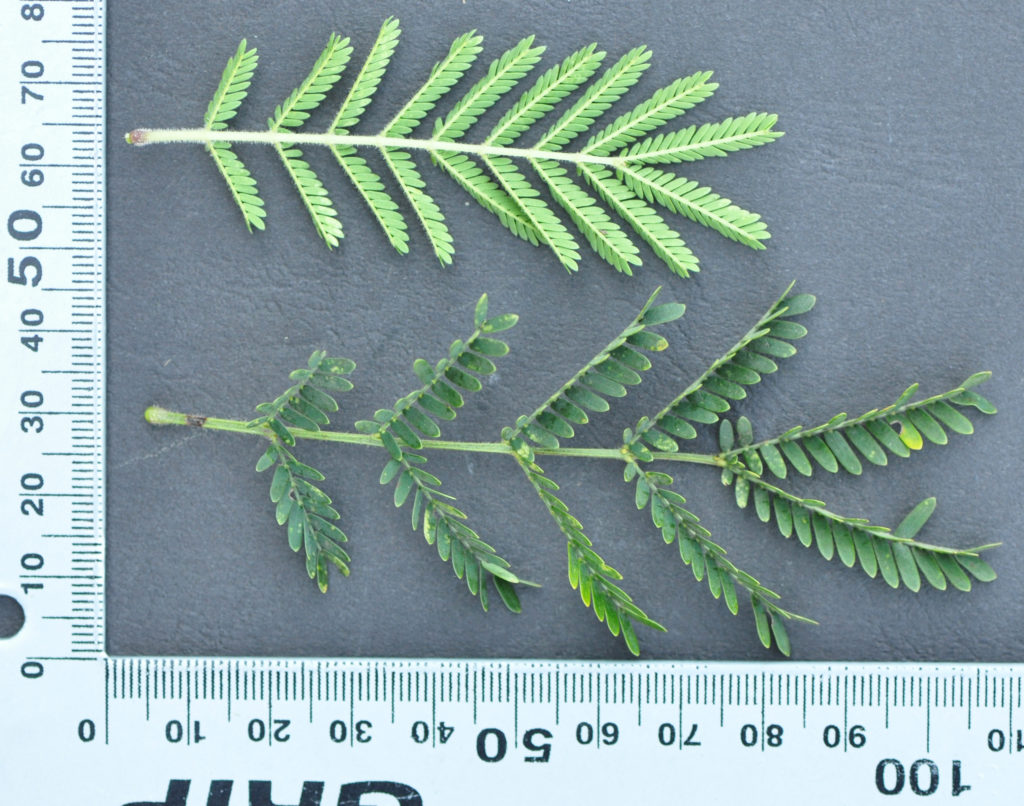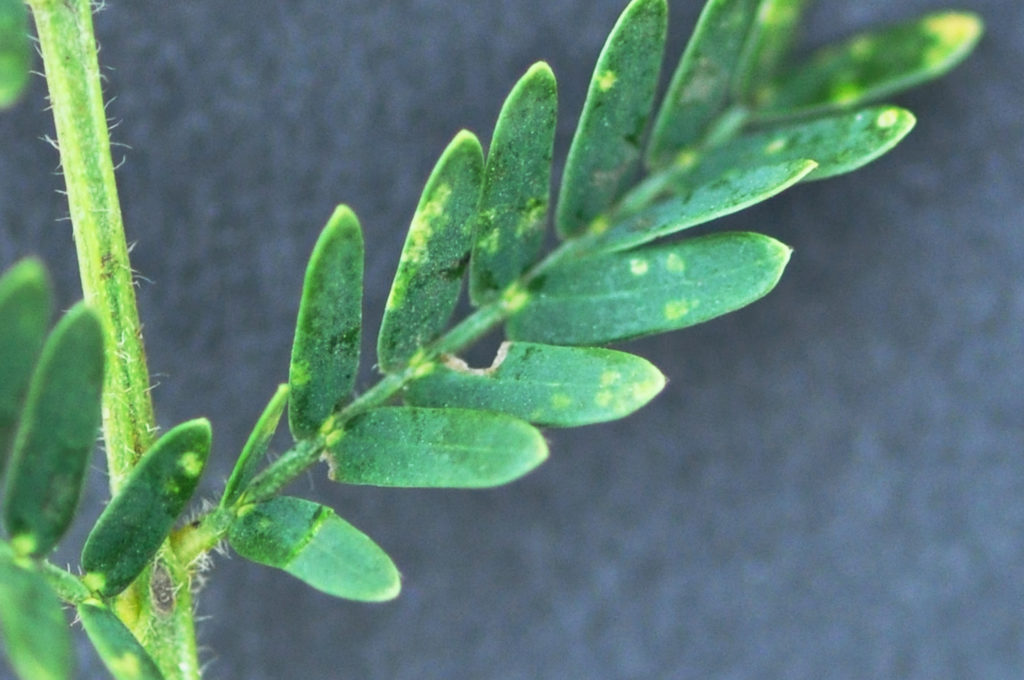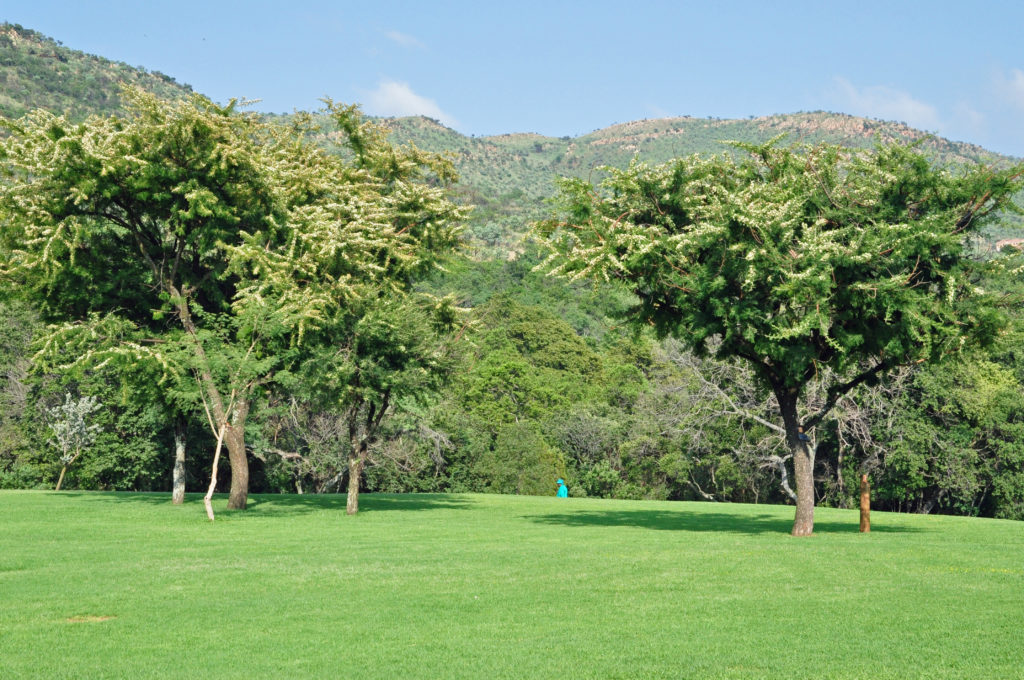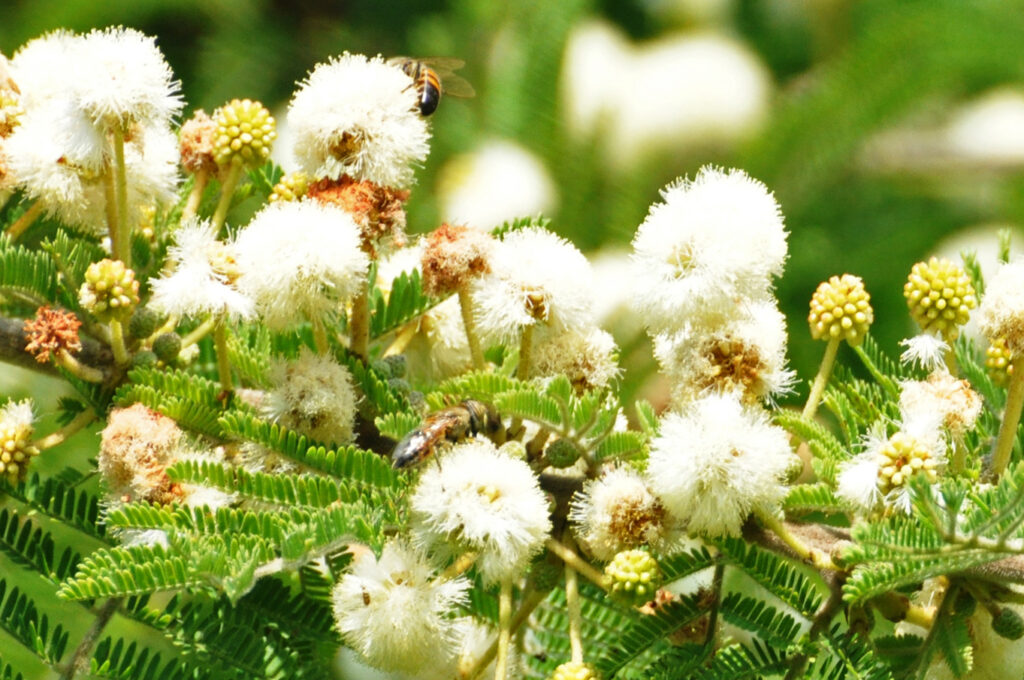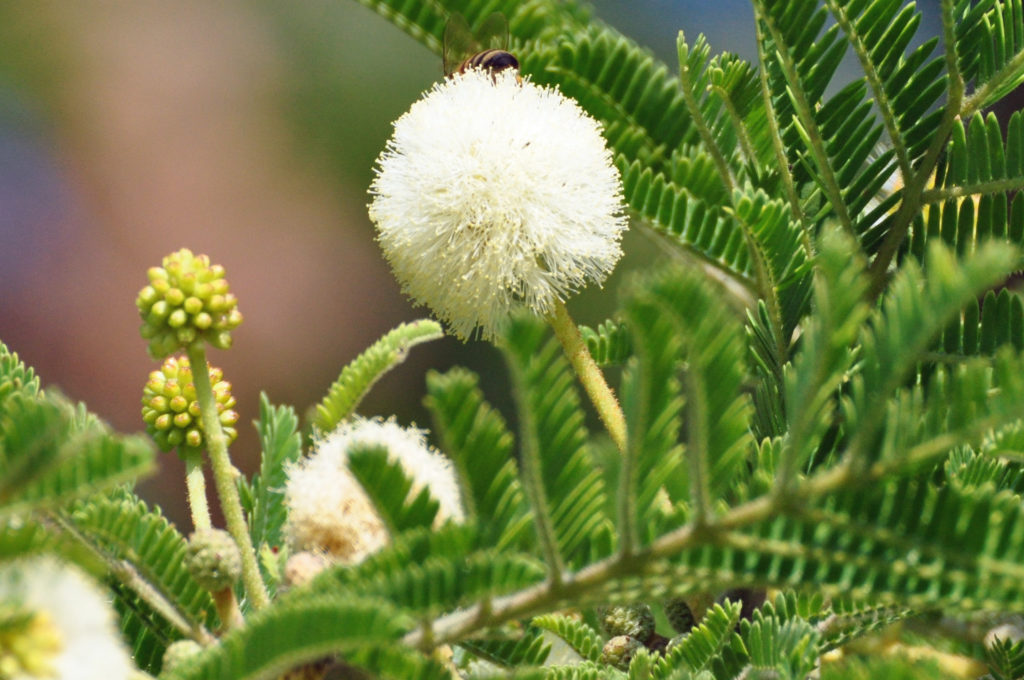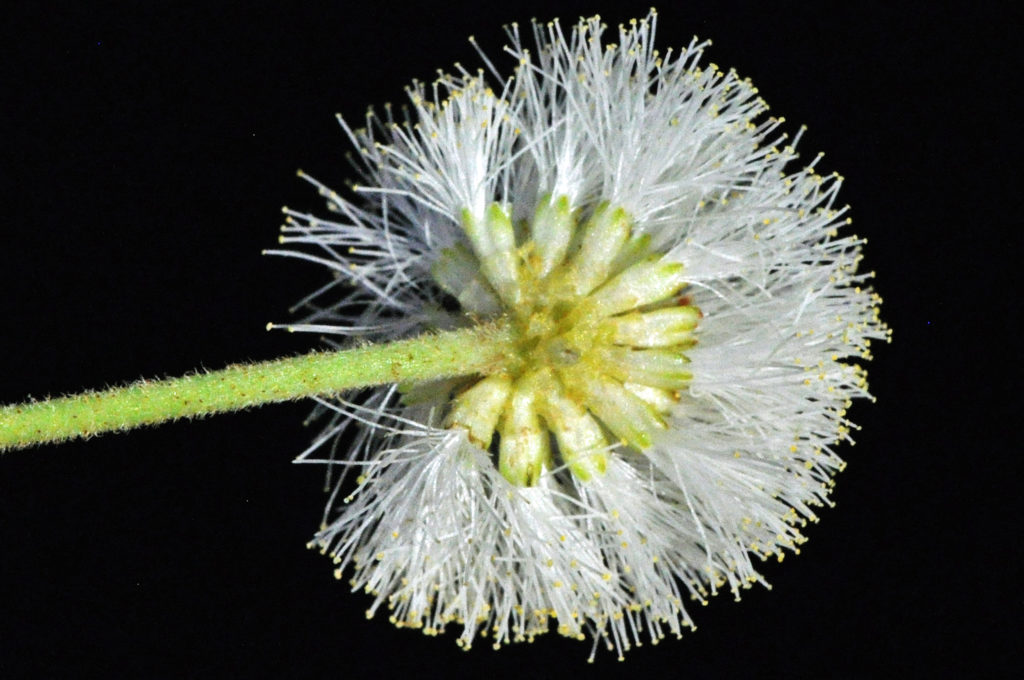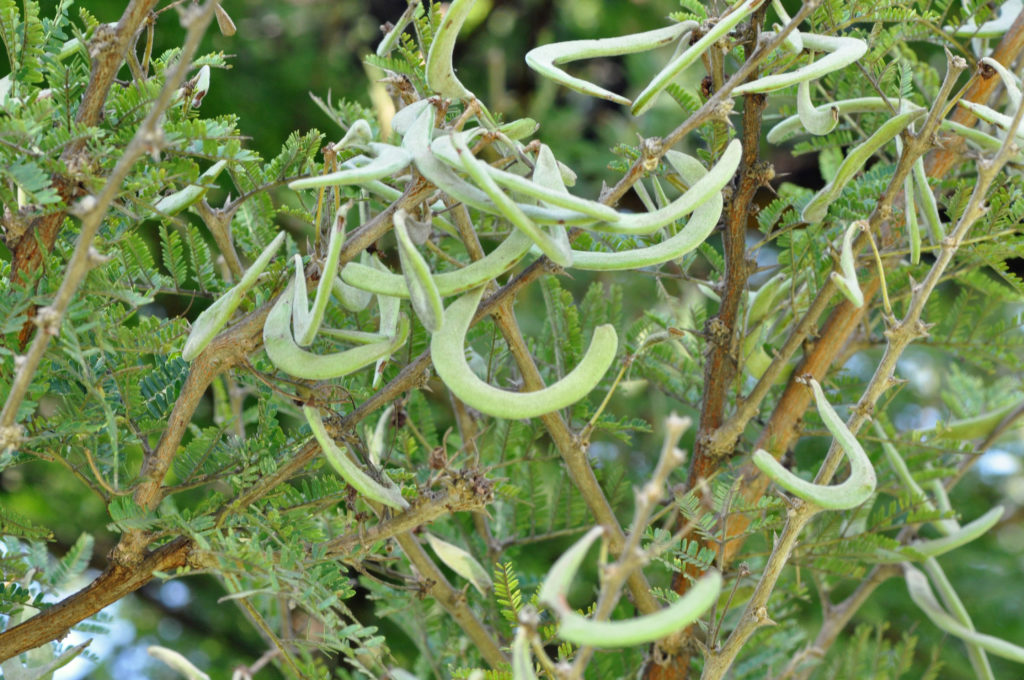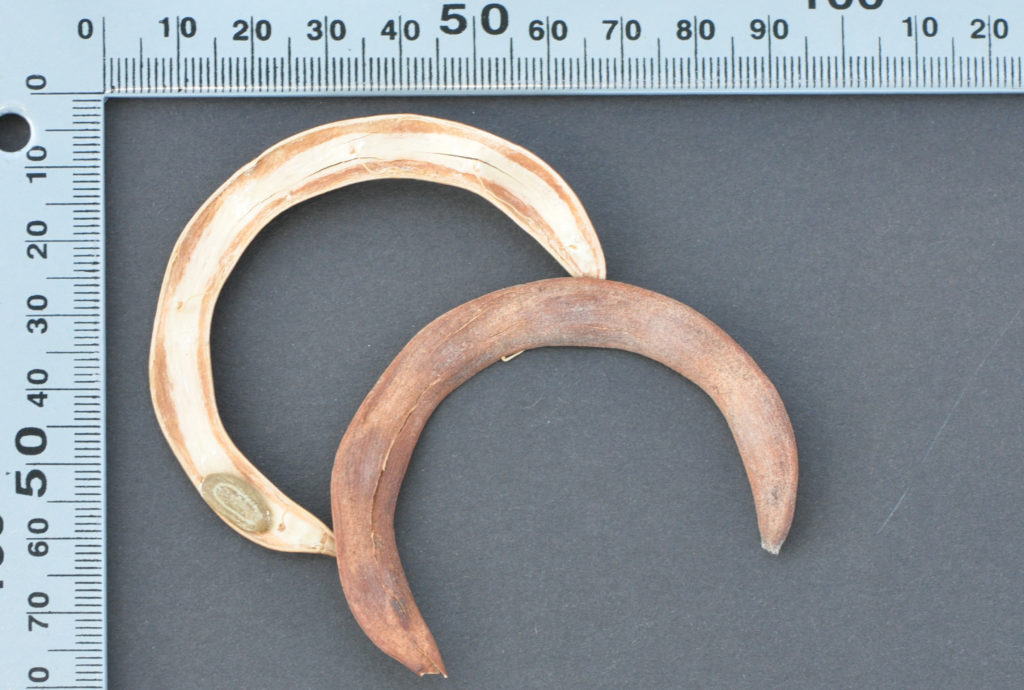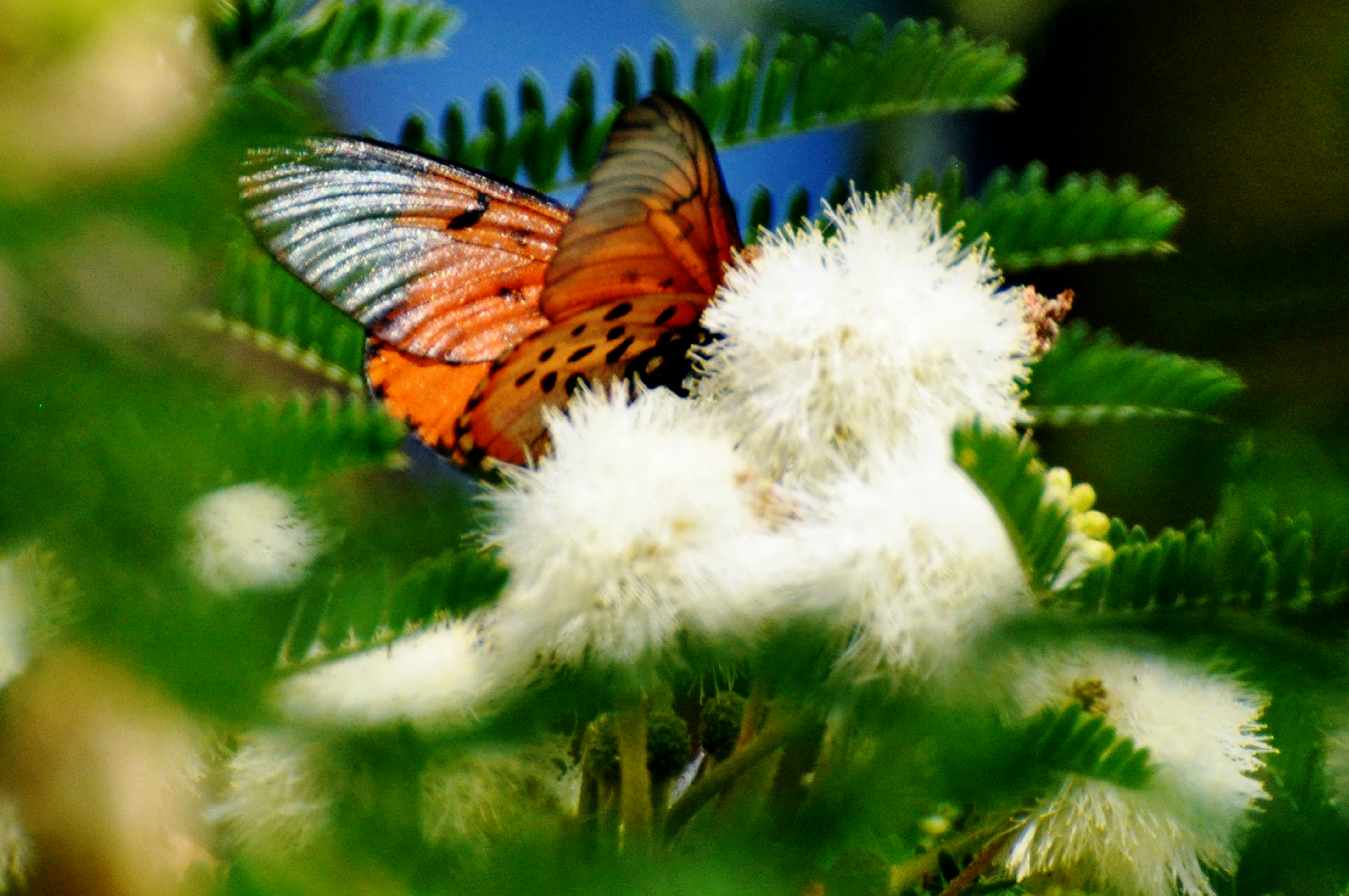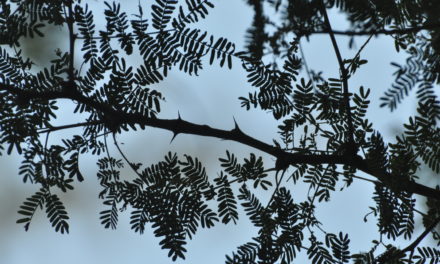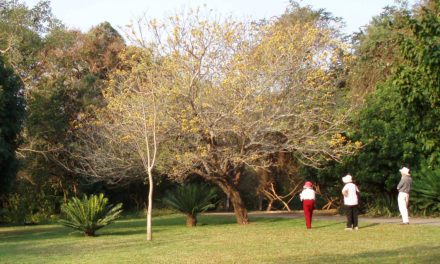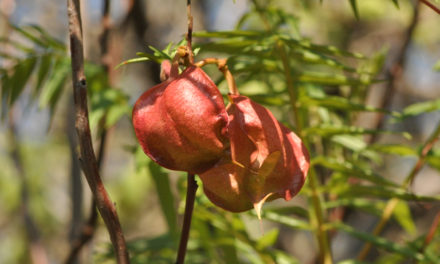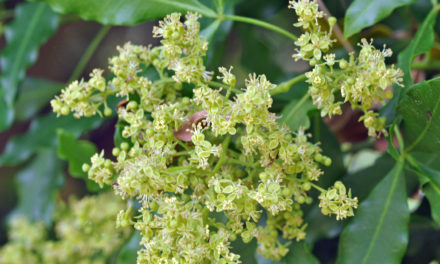General Info – summary
This deciduous Tree has reddish underbark and may reach 15m high. The dark green bipinnate Leaves are not spinescent. Paired spines arise from the branch. Small whitish regular & bisexual Flowers in condensed spikes with exserted white filaments & yellowish anthers. These surround a single, superior, 1-locular ovary & a thin style with a terminal stigma. Fruit is a dehiscent, narrow, sickle-shaped pod with flattened seeds.
Description
Vachellia gerrardii subsp. gerrardii
Previous Name: Acacia gerrardii subsp. gerrardi, Acacia hebecladoides.
SA Tree No. 167.
Common names: (Afr) Aapkop, Engelsedoring, Rooibas, Rooihaak, Rooidoring, Rooihaakdoring, Swarthaak, Swarthaakdoring, Swarthaak, Swarthaakdoring. (Eng) Red Thorn, Grey-haired acacia. (IsiNdebele) Ikope. (isiZulu) Umkhamanzi, Umngapunzi, Umphuze, Umsama. (Northern Sotho) Lerura, Mooka. (Setswana) Bota, Mokgi, Moki. (siSwati) Liphuze, Mbote. (Tshivenda) Muunga. (Xitsonga) Bota.
Family: Fabaceae, or Leguminosae (Pea, bean or legume family). After the Orchidaceae and the Asteraceae, the Fabaceae is the third largest Angiosperm (flowering plants) family with 700+ genera and close to 20 000 species. Local Tree genera on this website include Acacia (Vauchellia, Senegalia), Albizia, Bauhinia, Bolusanthus, Burkea, Calpurnia, Colophospermum, Cordyla, Cyclopia, Dichrostachys, Erythrina, Erythrophleum, Faidherbia, Indigofera, Mundulea, Peltophorum, Philenoptera, Piliostigma, Schotia and Xanthocercis. The Fabaceae are recognisable by their fruit and by their pinnately compound Leaves. Leaves may also be simple – even bilobed and usually have stipules – some of which may be spinescent. Leaflets are usually entire. Flowers are bisexual and bracteate. Regular flowers usually have 4-5 sepals and the same number of petals. Irregular flowers have 4-5 sepals and 5 or less petals. Stamens have anthers that have 2 pollen sacs and there are usually at least twice the number of stamens as petals – often 10. The superior Ovary has 1 locule containing 1 or more ovules. The Stigma and Style are simple. The single carpel develops into the Fruit, which is usually a pod. The mature pods may dehisce or break into segments. Seeds vary.
Name derivation: Species of the genus Vachellia and Senegalia were considered members of the genus Acacia until 2005. New Names. The genus Vachellia was named after George H. Vachell (1789 – 1839), chaplain and plant collector in China. Here the inflorescence is capitate (head like) and spinescent stipules are present. Plants in the genus Senegalia – (from Senegal) usually have no spinescent stipules and the inflorescence is usually a spike. gerrardii – named after William T. Gerrard – English botanical collector (plants, birds, insects and shells) in South Africa and Madagascar (1831 -1865). He collected the type specimen in KwaZulu-Natal.
Conservation: National Status: L C (Least Concern). Assessed: 2015 (L. von Staden).
Tree
This shrub or sparsely branched Tree may reach 7(usually)-15m in height. The Trunk is usually single or there may be up to 4 stems together. The crown is relatively flat (photo 595). The densely hairy branches are often ascending (photo 798). The tips of branches in mature trees are thick. Young hairy branches are reddish and tend to occur high up (photos 08 and 632). Here there are visible Lenticels (usually raised corky oval or elongated. In this photo, the initially hairy, paired spines are visible. The mature Bark is rough, longitudinally fissured and seamed crosswise. It is grey or reddish-brown to black (photo 287). When furrows develop (photo 567 – under Leaves) a reddish underbark may be visible. Here the epidermis may split off in flakes to reveal a rusty-red inner layer (photo 632).
- 595. 2014/12/23. Walter Sisulu NBG. Photo David Becking.
- 798. 2015/08/11. Walter Sisulu NBG. Photo David Becking.
- 287. 2014/06/24. Walter Sisulu NBG. Photo David Becking.
- 288. 2014/06/24. Walter Sisulu NBG. Photo David Becking.
- 08. 2014/04/15. Walter Sisulu NBG. Photo David Becking.
- 632. 2015/10/27. Walter Sisulu NBG. Photo David Becking.
Leaves
This deciduous tree (photos 959 & 798 – under Tree) has alternate Leaves that are hairy and bipinnate (Compound: twice pinnate. The hairy central axis or Rachis – the extension of the petiole of a compound leaf – has lateral Pinnae “branches” not leaflets and the leaflets are on these “side branches”). Leaves are up to 9cm long and tend to droop on the trees. In this plant, the Leaflets are closely spaced. The hairy Petiole (stalk of leaf – photo 561) is up to 1,5cm long. Leaves are borne on woody cushions (photo 567) and each leaf has between 5 and 12 pairs of pinna. On the sides of each pinna are 12 to 23 pairs of velvety Pinnules (leaflets: ultimate division of a bipinnate or tripinnate leaf). These are much lighter on the lower surface (photo 561). Individual pinnules are hairless. The velvety leaflets are up to 8 x 2mm. The Rachis (main axis – an extension of the petiole – photo 561) is densely hairy (light green in photo 563), up to 8cmm long and grooved on top (photo 563). Pairs of glands may be visible between some pairs of pinnae. The hairy Petiole is grooved on top (photo 561). On the upper surface of the petiole, a variously positioned gland may be present (photo 561). Glands also occur at the base of some upper pairs of pinnae. Petiolules (stalks of leaflets) are very short (photo 563). Stipules (basal appendages of the leaf petiole) are inconspicuous.
- 567. 2015/04/14. Walter Sisulu NBG. Photo David Becking.
- 561. 2015/04/14. Walter Sisulu NBG. Photo David Becking.
- 563. 2015/04/14. Walter Sisulu NBG. Photo David Becking.
Flowers
Trees in full flower are an impressive sight (photo 596). The white or creamy white (not yellow) balls of Flowers (photo 599) are sweet-scented, located at nodes, in leaf axils and up to 2cm in diameter. These are contained within greatly reduced (photo 597) Spikes (simple indeterminate inflorescence with sessile flowers on a single unbranched axis opening in succession towards the apex). The small bisexual flowers occur in almost spherical groups that are individually actinomorphic (Regular, symmetrical. Flowers are vertically divisible into similar halves by more than 1 plane passing through the axis). The whitish Sepals are connate (united or joined), bell shaped and up to 2,2mm long (photo 368). The Petals are up to 4,5mm long, green tipped (photo 368) and valvate (meeting by the edge without overlapping). In this photo, the slightly green Petal Lobes visible. The many Stamens are exserted (sticking out; projecting beyond). The free Filaments are white, and the yellowish Anthers (photo 368) dehisce lengthwise. Together they provide the overall slightly creamy colour to the flowers (photo 597). There is a superior, 1-locular Ovary from which emerges a filiform (thread or filament like) Style ending in a small, terminal Stigma. In this photo the style and stigma have not yet appeared. (Sep-Mar).
- 596 2014.12.23 Walter Sisulu NBG. Photo: David Becking.
- 599. 2015/01/20. Walter Sisulu NBG. Photo David Becking.
- 597 .2014/12/23. Walter Sisulu NBG. Photo David Becking.
- 368 2016.12.22 Walter Sisulu NBG. Photo: David Becking. Dissected.
Fruit
The Fruit occurs in narrow falcate (sickle-shaped) Pods (photo 559) that are approximately 16 x 1,2cm long. Only young pods are hairy. They mature to grey or dark brown colour, and dehisce on the tree. Compressed oblong Seeds (photo 196) have a hard testa (seed covering), are olive-brown and oblong (photo 196). The 2 cotyledons (seed leaves; primary leaf or leaves in the embryo) are flat. (Jan – May)
- 559 2015.04.14 Walter Sisulu NBG. Photo: David Becking.
- 196 2014.10.21 Walter Sisulu NBG. Photo: David Becking.
Distribution & Ecology
Distribution ranges from Kwa-Zulu Natal e.g. Mkuzi Game Reserve – just to the south of Swaziland, Free State – less common, Limpopo, Mpumalanga, and parts of North-West. Beyond South Africa, they occur in Swaziland, Zimbabwe, Zambia, south and central Mozambique, and northwards to Nigeria, Kuwait and Sudan. Trees are found in woodland, wooded grassland and arid savanna (a rolling grassland scattered with shrubs and isolated trees, which can be found between a tropical rainforest and desert biome). Trees usually occur below 1 400m. They also occur along the Indian Ocean Coastal Belt and often grow in places with impeded drainage. Trees can survive a mild frost. Baboons eat young Pods and young Shoots. Black rhinos eat the Bark and Leaves. Giraffe, steenbok and duiker consume the leaves. The Leaden Hairtail butterflies (Anthene amarah amarah) are on the wing year-round. Their butterfly larvae feed on the leaves of many species of Vachellia including this one, and on Senegalia sieberiana.
- 601 2014.12.23 Walter Sisulu NBG. Photo: David Becking.
Ethnobotany
The Leaves are good forage and consumed by domestic animals. The leaves contain about 17% crude protein and branches are lopped to feed domestic stock in times of need. The inner Bark is used to make twine. The bark contains tannin. Wood is subject to borer attack and is not much used. The tree is drought and slightly frost resistant.
References
Boon, R. 2010. Pooley’s Trees of eastern South Africa. Flora and Fauna Publications Trust, Durban.
Burrows, J.E., Burrows, S.M., Lotter, M.C. & Schmidt, E. 2018. Trees and Shrubs Mozambique. Publishing Print Matters (Pty) Ltd. Noordhoek, Cape Town.
Coates Palgrave, M. 2002. Keith Coates Palgrave Trees of Southern Africa, edn 3. Struik, Cape Town.
Lawrence, G. H. M, 1951. Taxonomy of Vascular Plants. The Macmillan Company, New York. Tenth Printing 1965.
Palmer, E. & Pitman, N. 1972. Trees of southern Africa. Balkema, Amsterdam, Cape Town.
Ross, J. H. A conspectus of the African Acacia Species. 1979. Botanical Research Institute.
Schmidt, S. Lotter, M. & McCleland, W. 2002. Trees and Shrubs of Mpumalanga and the Kruger National Park. Jacana, Johannesburg.
von Staden, L. 2015. Vachellia gerrardii (Benth.) P.J.H.Hurter subsp. gerrardii. National Assessment: Red List of South African Plants version 2020.1. Accessed on 2024/02/22.
van Wyk, B. & van Wyk, P. 1997 Field guide to Trees of Southern Africa. Struik, Cape Town.
Woodhall, S. 2020. Field Guide to Butterflies of South Africa, edn 2. Donnelley, RR, China.
https://en.wikipedia.org/wiki/Anthene_amarah
http://www.zimbabweflora.co.zw/speciesdata/species.php?species_id=125920
http://www.fao.org/ag/AGP/AGPC/doc/GBASE/DATA/PF000115.HTM
http://posa.sanbi.org/flora/browse.php?src=SP

